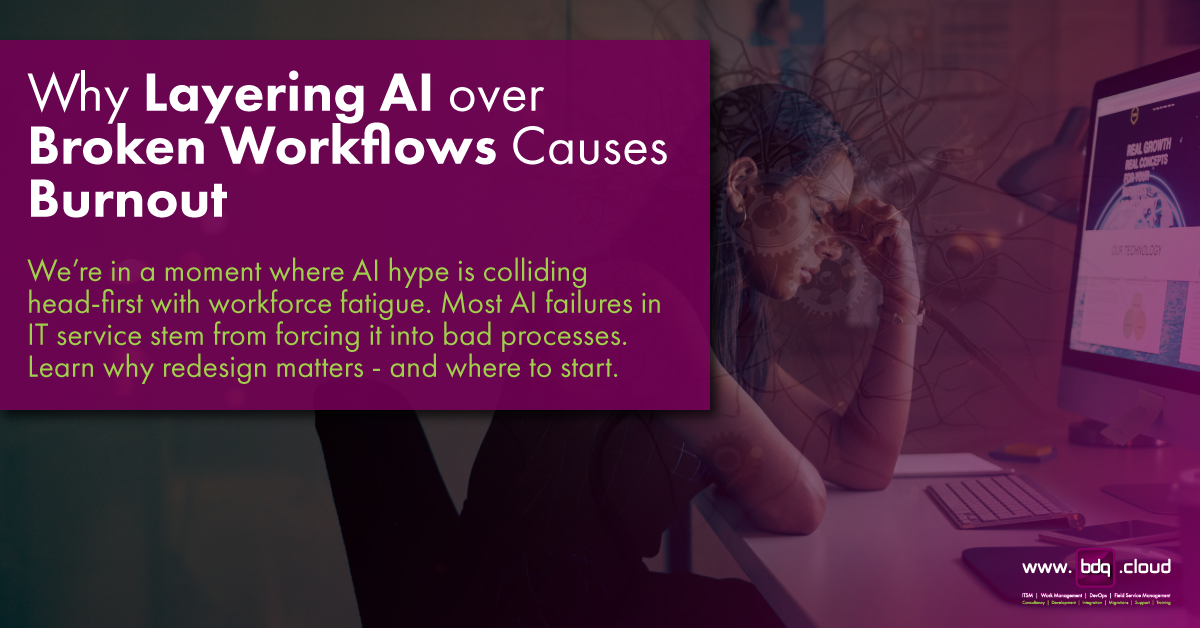We’re in a moment where AI hype is colliding head-first with workforce fatigue. New research from a survey of 9,236 knowledge workers reveals a stark truth: the gap between AI expectation and AI reality has never been wider.
While adoption is climbing, burnout is following right behind. Why? Because too many organisations are simply slapping AI onto broken workflows, rather than rethinking how work itself should function.
Why AI Alone Won’t Fix Bad Processes
Stacking AI on Chaos
You can teach a parrot to recite Shakespeare - but it’s not going to understand the play. When you graft AI onto manual, disjointed processes, you're not automating value - you’re automating inefficiency faster.
-
Context collapse: AI systems need context (history, policies, asset relationships). Without it, they guess - often incorrectly.
-
No human‑AI handoff strategy: When AI hits a corner case, who steps in? If there’s no clear escalation path, the result is “broken, faster.”
-
False positives & error amplification: AI models amplify bad data and ambiguous signals. If your process doesn’t filter or validate, you get noise + extra work.
The Hidden Burnout Cost
There’s growing evidence that “more AI” doesn’t always mean “less work.” In fact:
-
Frequent AI users report
45% higher burnout rates than those who seldom rely on AI.
Forbes
-
In knowledge work, adopting generative AI can
reduce the perceived effort of routine tasks, but shift it toward verification and oversight instead of relief.
Microsoft
-
Some surveys highlight that over
64% of knowledge workers say tech use has negatively impacted their well‑being - e.g. overload, context switching, notifications.
IT Pro
In short: AI without process discipline can magnify friction - not resolve it.

What Better AI‑Enabled ITSM Looks Like
1. Start With Workflow Redesign, Not AI Hacks
Redesign first. Ask: what steps should exist? Which tasks can be eliminated, merged, or rethought before AI enters?
2. Build a Context Layer
Your AI is only as good as the data it sees. Invest in connections:
3. Hybrid Control Architecture
Always design with guardrails. AI shouldn’t be “set it and forget it.”
4. Measure & Learn, Fast
Don’t wait months to validate AI changes. Use metrics like:
The Future Isn’t Autonomy Alone - It’s Partnership
The organisations that crack this will stop chasing “autonomous AI agents” as some holy grail. Instead, they'll build systems where AI and humans are teammates.
When that balance works, you get speed and trust.
🛠️ Ready to rethink your approach?
If your team is struggling with failed AI pilots, burnout from friction, or lack of context in ITSM workflows - let’s talk. At BDQ, we specialise in guiding organisations through the transition from flawed automation to intelligent, sustainable systems. Contact us if anything in this post resonates with your current challenges.
Let’s build AI that lifts work - not tires as it goes.




